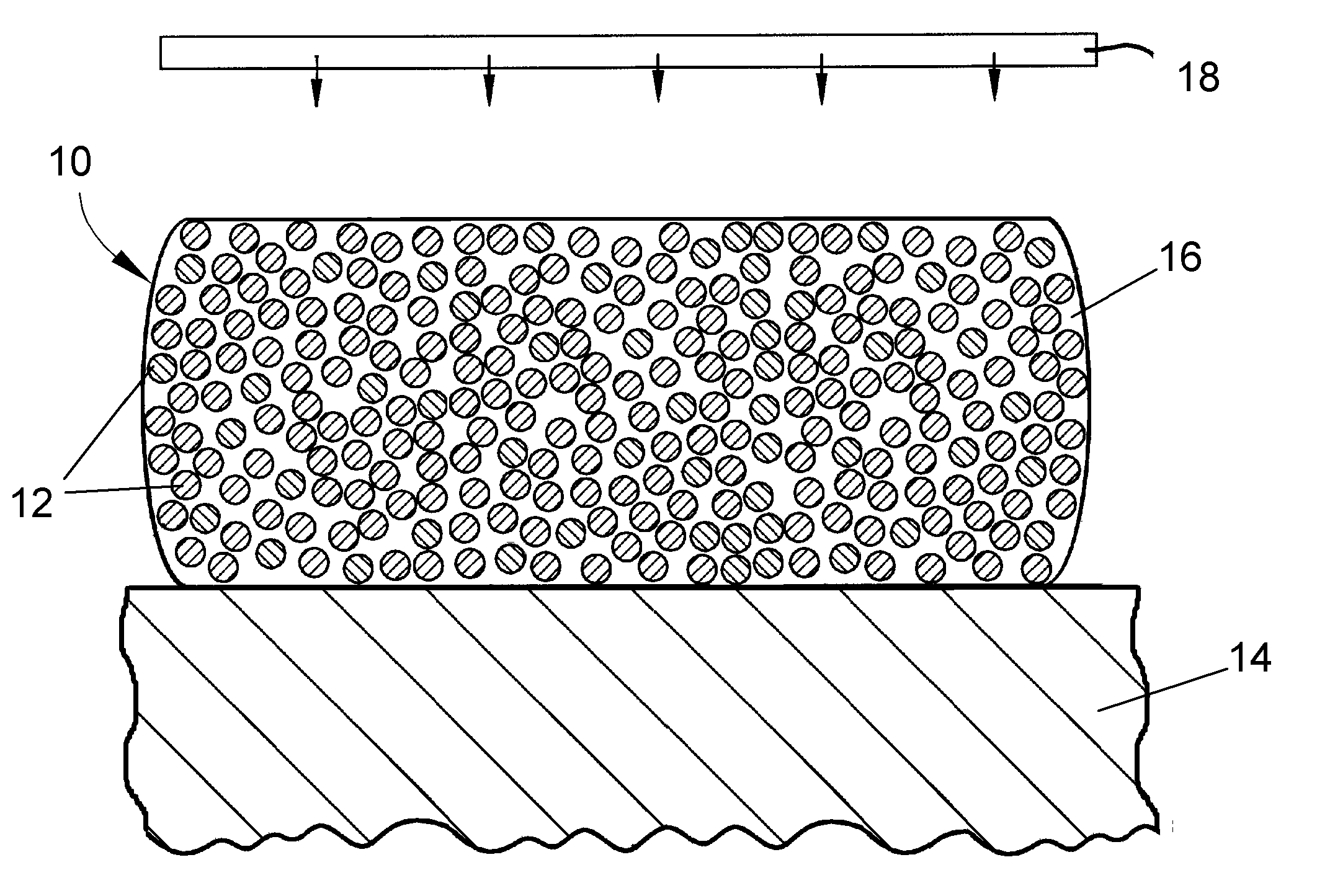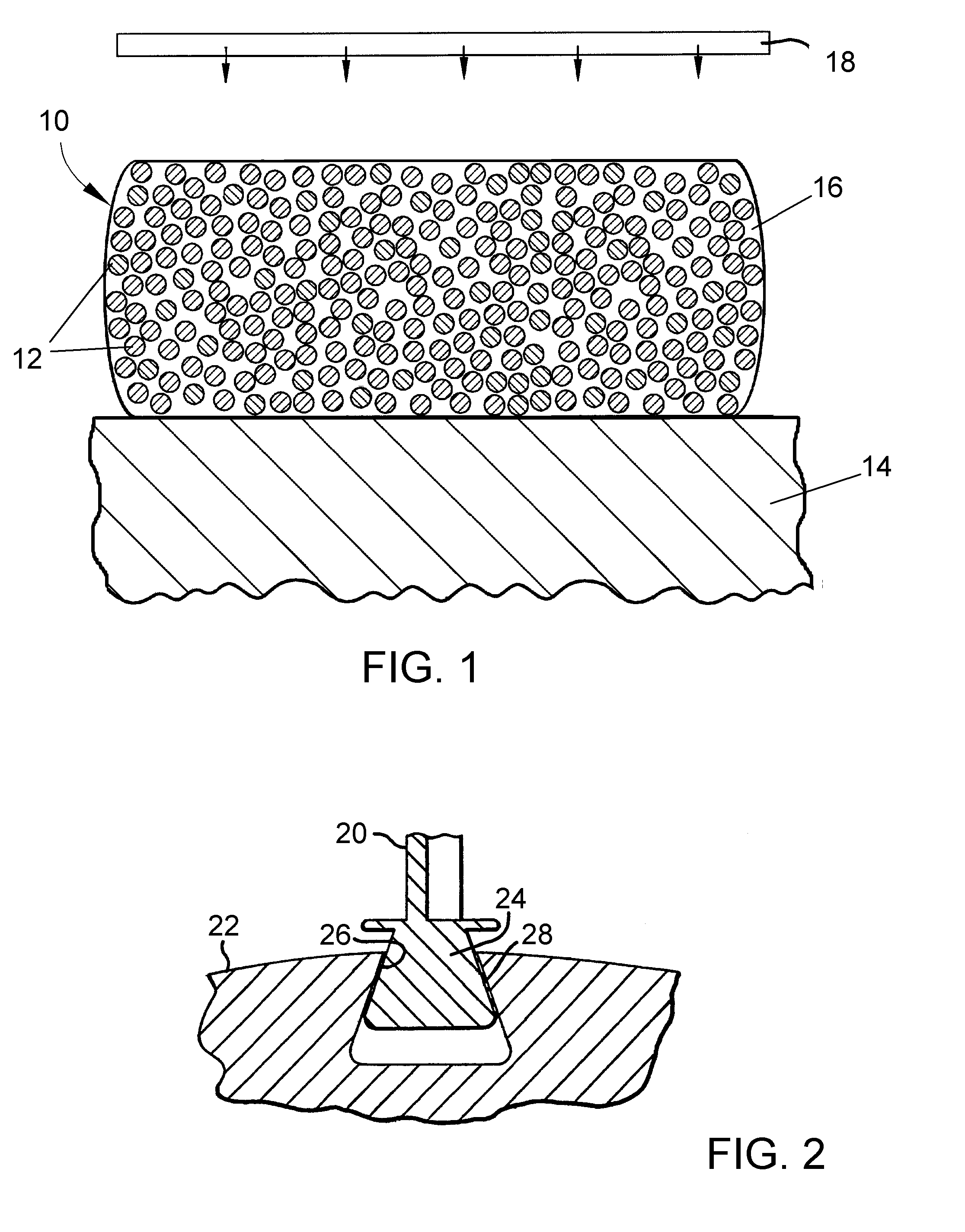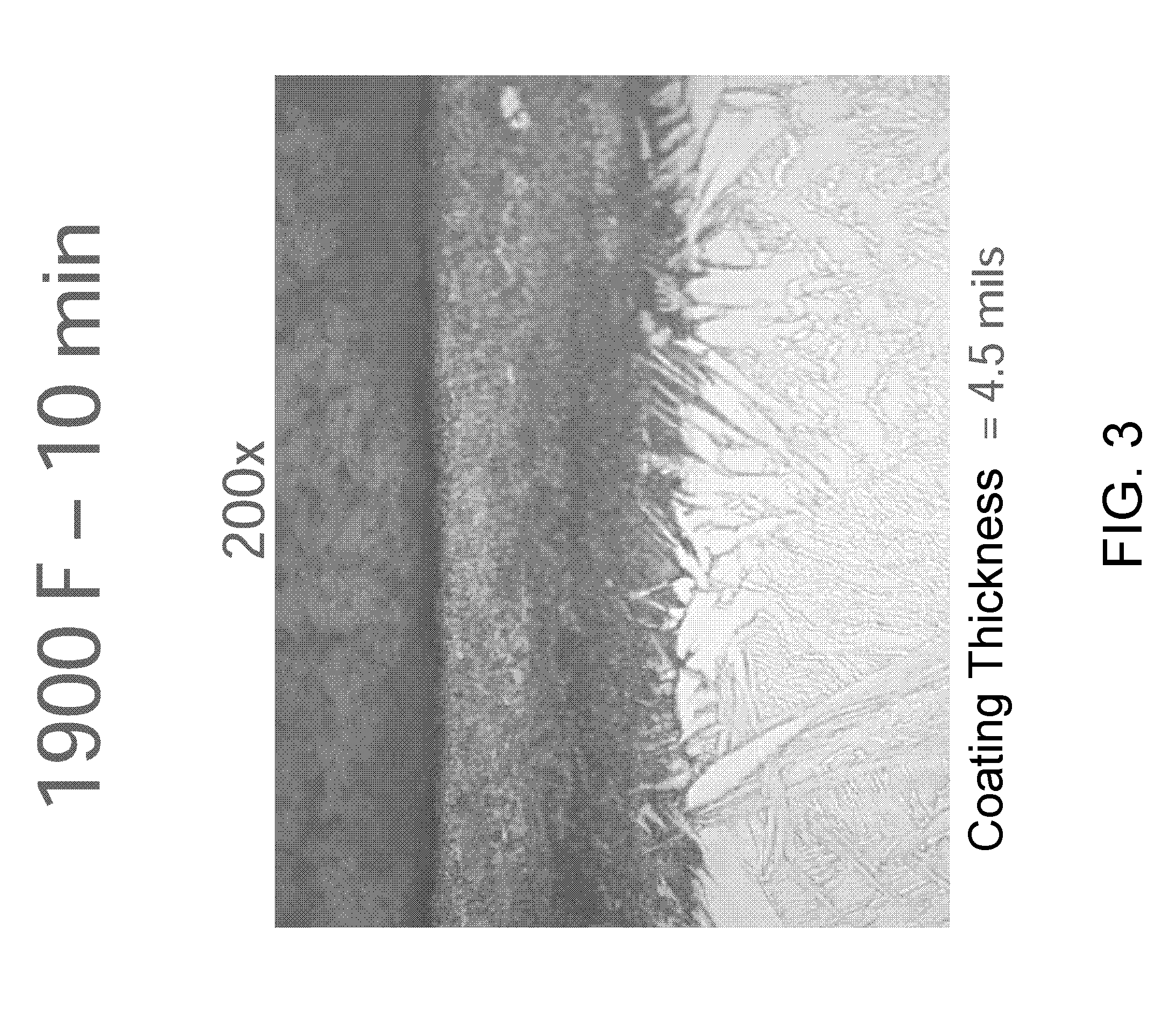Microwave process for forming a coating
a microwave process and coating technology, applied in the field of coating methods, can solve the problems of adversely affecting the mechanical properties of the substrate, adversely affecting the mechanical and environmental properties, etc., and achieve the effect of not significantly degrading the properties of the substra
- Summary
- Abstract
- Description
- Claims
- Application Information
AI Technical Summary
Benefits of technology
Problems solved by technology
Method used
Image
Examples
Embodiment Construction
[0012]The invention will be described with specific reference to processing of components for a gas turbine engine, and particularly the coating of such components. However, the invention has application to a variety of components and materials other than those discussed, and such variations are within the scope of this invention.
[0013]FIG. 1 schematically represents a preformed sheet material 10 containing powder particles 12 applied to and contacting a surface of a substrate 14. The preformed sheet material 10 is shown in the form of a tape, in which case the particles 12 are contained within a binder 16 that, according to known practices such as braze tapes used in brazing techniques, burns off at temperatures below that required to melt the particles 12. Alternatively, the sheet material 10 may be in the form of a binder-free presintered shape held together as a result of the particles 12 being fused (agglomerated) together. Another option is to use loose powder particles 12, in...
PUM
| Property | Measurement | Unit |
|---|---|---|
| particle size | aaaaa | aaaaa |
| temperatures | aaaaa | aaaaa |
| particle sizes | aaaaa | aaaaa |
Abstract
Description
Claims
Application Information
 Login to View More
Login to View More - R&D
- Intellectual Property
- Life Sciences
- Materials
- Tech Scout
- Unparalleled Data Quality
- Higher Quality Content
- 60% Fewer Hallucinations
Browse by: Latest US Patents, China's latest patents, Technical Efficacy Thesaurus, Application Domain, Technology Topic, Popular Technical Reports.
© 2025 PatSnap. All rights reserved.Legal|Privacy policy|Modern Slavery Act Transparency Statement|Sitemap|About US| Contact US: help@patsnap.com



